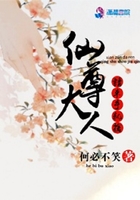JOE-PYE WEED; TRUMPET WEED; PURPLE THOROUGHWORT; GRAVEL or KIDNEY-ROOT; TALL or PURPLE BONESET(Eupatorium purpureum) Thistle family Flower-heads - Pale or dull magenta or lavender pink, slightly fragrant, of tubular florets only, very numerous, in large, terminal, loose, compound clusters, generally elongated.Several series of pink overlapping bracts form the oblong involucre from which the tubular floret and its protruding fringe of style-branches arise.Stem: 3 to 10 ft.high, green or purplish, leafy, usually branching toward top.Leaves: In whorls of 3 to 6(usually 4), oval to lance-shaped, saw-edged, petioled, thin, rough.
Preferred Habitat - Moist soil, meadows, woods, low ground.
Flowering Season - August-September.
Distribution - New Brunswick to the Gulf of Mexico, westward to Manitoba and Texas.
Towering above the surrounding vegetation of low-lying meadows, this vigorous composite spreads clusters of soft, fringy bloom that, however deep or pale of tint, are ever conspicuous advertisements, even when the goldenrods, sunflowers, and asters enter into close competition for insect trade.Slight fragrance, which to the delicate perception of butterflies is doubtless heavy enough, the florets' color and slender tubular form indicate an adaptation to them, and they are by far the most abundant visitors, which is not to say that long-tongued bees and flies never reach the nectar and transfer pollen, for they do.
But an excellent place for the butterfly collector to carry his net is to a patch of Joe-Pye weed in September.As the spreading style-branches that fringe each tiny floret are furnished with hairs for three-quarters of their length, the pollen caught in them comes in contact with the alighting visitor.Later, the lower portion of the style-branches, that is covered with stigmatic papillae along the edge, emerges from the tube to receive pollen carried from younger flowers when the visitor sips his reward.If the hairs still contain pollen when the stigmatic part of the style is exposed, insects self-fertilize the flower;and if in stormy, weather no insects are flying, the flower is nevertheless able to fertilize itself, because the hairy fringe must often come in contact with the stigmas of neighboring florets.It is only when we study flowers with reference to their motives and methods that we understand why one is abundant and another rare.Composites long ago utilized many principles of success in life that the triumphant Anglo-Saxon carries into larger affairs today.
Joe-Pye, an Indian medicine-man of New England, earned fame and fortune by curing typhus fever and other horrors with decoctions made from this plant.
COMMON BURDOCK; COCKLE-BUR; BEGGARS BUTTONS; CLOT-BUR; CUCKOOBUTTON
(Arctium minus; Lappa officinalis: var.minor of Gray) Thistle family Flower-heads - Composite of tubular florets only, about 1/2 in.
broad; magenta varying to purplish or white; the prominent round involucre of many overlapping leathery bracts, tipped with hooked bristles.Stem: 2 to 5 ft.high, ****** or branching, coarse.
Leaves: Large, the lower ones often 1 ft.long, broadly ovate, entire edged, pale or loosely cottony beneath, on hollow petioles.
Preferred Habitat - Waste ground, waysides, fields, barnyards.
Flowering Season - July-October.
Distribution - Common throughout our area.Naturalized from Europe.
A larger burdock than this (A.Lappa) may be more common in a few localities of the East, but wherever one wanders, this plebeian boldly asserts itself.In close-cropped pastures it still flourishes with the well-armed thistles and mulleins, for the great leaves contain an exceedingly bitter, sour juice, distasteful to grazers.Nevertheless the unpaid cattle, like every other beast and man, must nolens volens transplant the burs far away from the parent plant to found new colonies.Literally by hook or by crook they steal a ride on every switching tail, every hairy dog and woolly sheep, every trouser-leg or petticoat.
Even the children, who make dolls and baskets of burdock burs, aid them in their insatiate love of travel.Wherever man goes, they follow, until, having crossed Europe - with the Romans? -they are now at home throughout this continent.Their vitality is amazing; persecution with scythe and plow may retard, but never check their victorious march.Opportunity for a seed to germinate may not come until late in the summer; but at once the plant sets to work putting forth flowers and maturing seed, losing no time in developing superfluous stalk and branches.Butterflies, which, like the Hoboken Dutch, ever delight in magenta, and bees of various kinds, find these flowers, with a slight fragrance as an additional attraction, generous entertainers.
Pink, of all colors, is the most unstable in our flora, and the most likely to fade.Magentas incline to purple, on the one hand, or to pure pink on the other, and delicate shades quickly blanch when long exposed to the sun's rays.Thus we frequently find white blossoms of the once pink rhododendron, laurel, azalea, bouncing Bet, and turtle-head.Albinos, too, regularly occur in numerous species.Many colored flowers show a tendency among individuals to revert to the white type of their ancestors.The reader should bear these facts in mind, and search for his unidentified flower in the previous section or in the following one if this group does not contain it.














